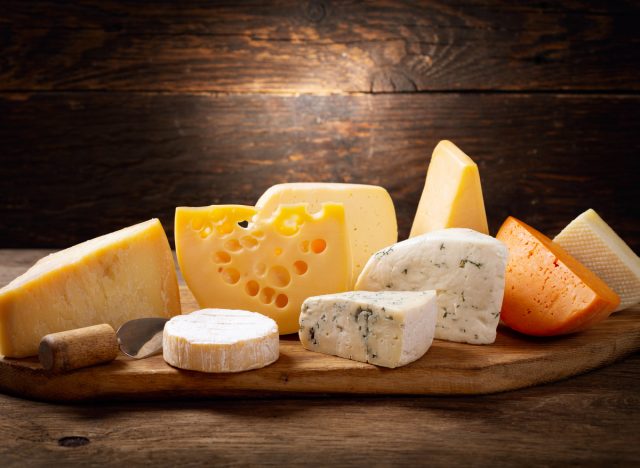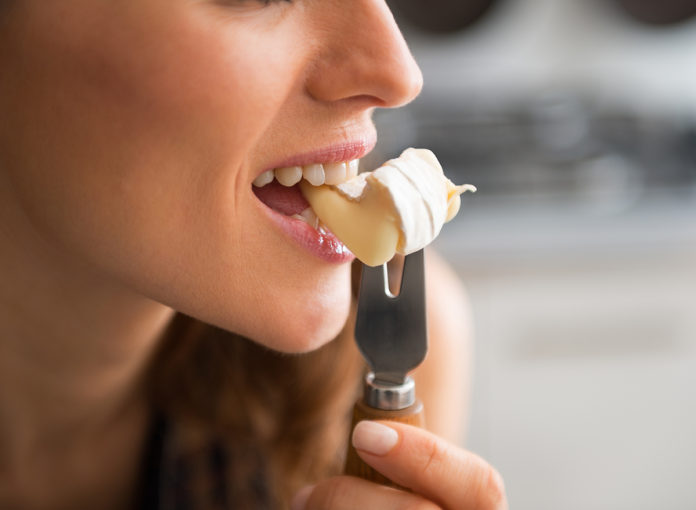Cheese is everywhere. It’s on your pasta, in your omelet, shoved into a sandwich, and can even be sprinkled on your salads. Because there are so many types of cheese to choose from, it’s easy to incorporate a slice, crumble, sprinkle, or shred into your dishes throughout the day—every day. Although cheese gets both a good and bad rap as far as affecting your health goes, if you’re looking to lose weight, you may be wondering what the dairy product could do to your waistline.
According to one of the registered dietitians on our medical expert board, Lisa Young, PhD, RDN, author of Finally Full, Finally Slim and The Portion Teller Plan, cheese can have both a positive and negative impact on your waistline.
“Cheese can be both good for your waistline or bad, depending on how you include it in your diet,” explains Dr. Young.
Let’s start with the positives.
When discussing the positives, cheese can provide you with two benefits: protein and aiding in weight loss.
“For the positive, cheese is a good source of protein which helps keep you satisfied, so a little goes a long way,” says Dr. Young. “And if you’re watching weight, part-skim is best.”
RELATED: 10 Low-Fat Cheeses You Can Eat When You’re Losing Weight
Protein takes longer to digest than carbs, so it stays in your stomach longer, making you feel fuller for an extended period of time. This may help you avoid any unwanted snacking or overeating in your next meal, which are two factors that may lead to potential weight gain.
If you’re looking for a cheese rich in protein, try low-fat cottage cheese. According to the U.S. Department of Agriculture, one cup contains about 24 grams of protein. It makes for a great breakfast option or snack throughout the day.
If you’re looking for part-skim, part-skim mozzarella cheese comes in at about 20 grams of protein per cup.
Otherwise, Young suggests adding an ounce or two of cheese to a salad. Or, on top of a slice of toast.

However, too much cheese can cause the opposite effect.
“For the con, the calories in cheese add up quickly, so watch your portion and stick to one to two ounces, or two fingers worth,” says Dr. Young. “Cheese can add to weight gain when you nibble mindlessly on cheese at a cocktail party or you cut slice after slice.”
An example would be consuming two slices of Boar’s Head White American Cheese, which equals 110 calories. Although it may not seem like a lot at first glance, think about how often you add cheese to your meal. Whether it be adding it to your sandwich, or topping it onto a bowl of pasta, it adds up.
Furthermore, in a study published in the journal, Nutrients, an excess amount of dairy intake, which includes cheese, has been shown to increase body weight in adults aged 18 to 50 years old.
Young also suggests not adding cheese to your meal when eating other protein-rich foods.
“For example, skip the cheese on a burger or a Turkey sandwich,” she suggests. “Or, if you have a salad with egg and beans, skip the cheese.”
Kayla Garritano

